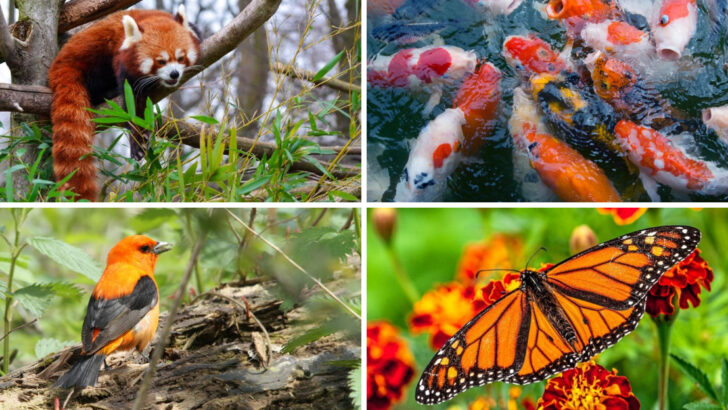Orange isn’t just a color—it’s a warning, a beacon, a flare shot by nature itself.
From the jungle floor to the depths of the sea, orange animals don’t hide. They demand to be seen. Bold. Fiery. Unapologetically loud. These creatures aren’t blending in with anything—and that’s exactly the point.
Some flash their glow to scare off predators. Others flaunt it like royalty strutting through their wild kingdom. Whether it’s fur, feathers, or scales, that electric flame screams: I’m here, and I’m fabulous.
Get ready to meet 18 orange wonders that blaze like living fire. You’ve never seen nature quite this fierce.
Red Fox
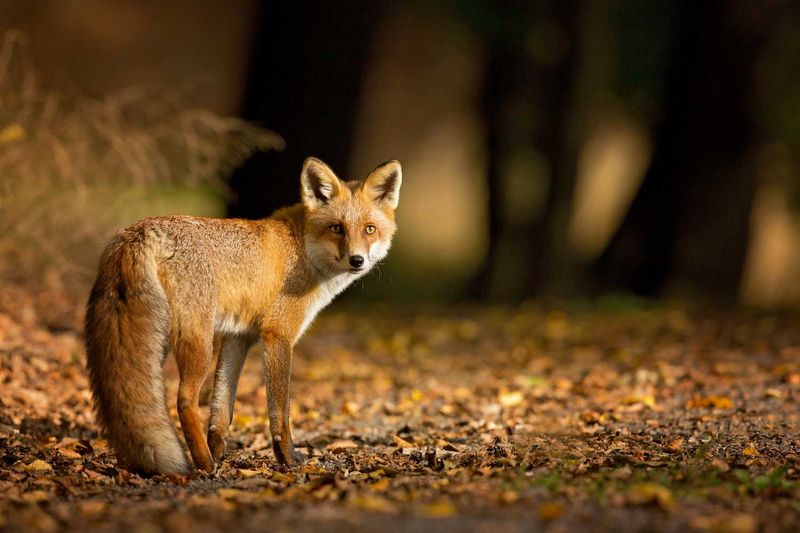
The red fox is a creature of cunning and charm. With its vibrant orange fur, it almost seems to glow in the forest’s dappled light. Known for its cleverness, the fox navigates through woods and fields with grace. Its bushy tail, often tipped with white, adds to its allure.
Foxes are solitary hunters with a diet that includes rodents, birds, and fruits. Their adaptability makes them successful in various habitats, from rural countryside to urban areas.
Did you know? The red fox can make over 40 different sounds, including barks, screams, and howls!
Clownfish
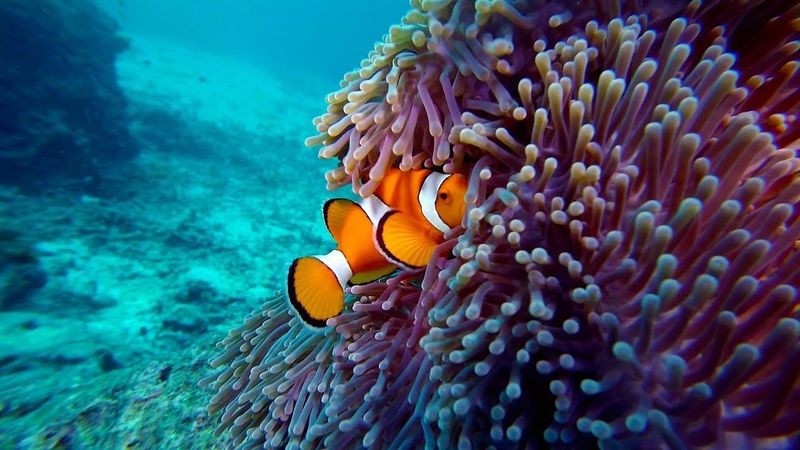
Clownfish, best known for their starring role in “Finding Nemo,” are a symphony of orange and white. These small, charismatic fish form mutualistic bonds with sea anemones. Their bright orange bodies, contrasted with white stripes, make them easily recognizable.
Living in the warm, shallow waters of the Indian and Pacific Oceans, clownfish are social, often seen darting playfully among the anemone’s tentacles. Despite their small size, they display boldness and curiosity.
Fun fact: Clownfish are born male, but can change to female if the dominant female dies!
Baltimore Oriole
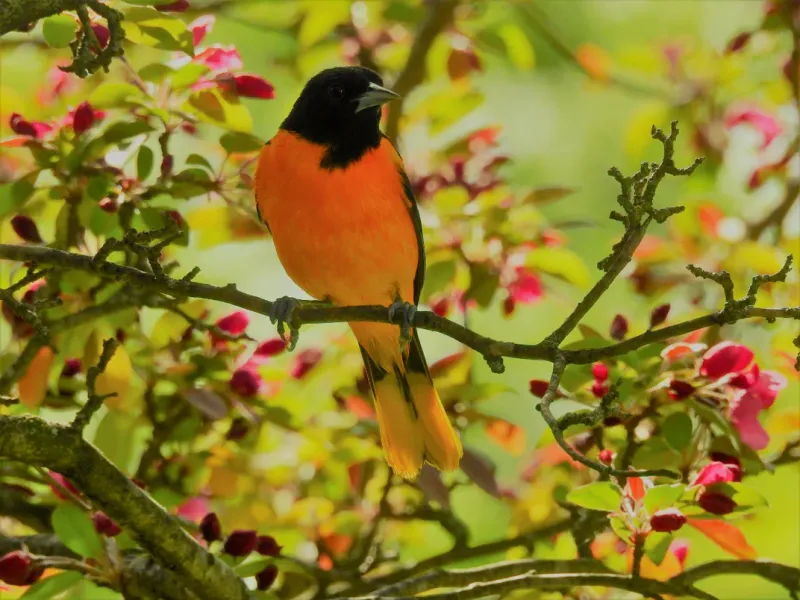
The Baltimore Oriole dazzles with its fiery orange and black plumage, making it a gem among North American birds. These songbirds are not just visually striking but also fill the air with their melodious whistles.
Orioles favor open woodlands and gardens, where they feast on nectar, fruit, and insects. Their hanging woven nests are architectural wonders.
Curious tidbit: The Baltimore Oriole is named after Lord Baltimore, whose coat of arms shares the bird’s vibrant colors.
Orange Tabby Cat

Orange tabby cats, often called marmalade cats, charm with their lively personalities and striking appearance. Their coats, ranging from deep ginger to pale cream, are adorned with stripes, swirls, or spots.
These felines are known for their affectionate nature and playful antics, often seeking the warmth of a sunny spot or a cozy lap. Orange tabbies are not a breed but a color pattern found in domestic cats.
Trivia: Most orange tabby cats are male due to the genetics of coat color inheritance!
Goldfish
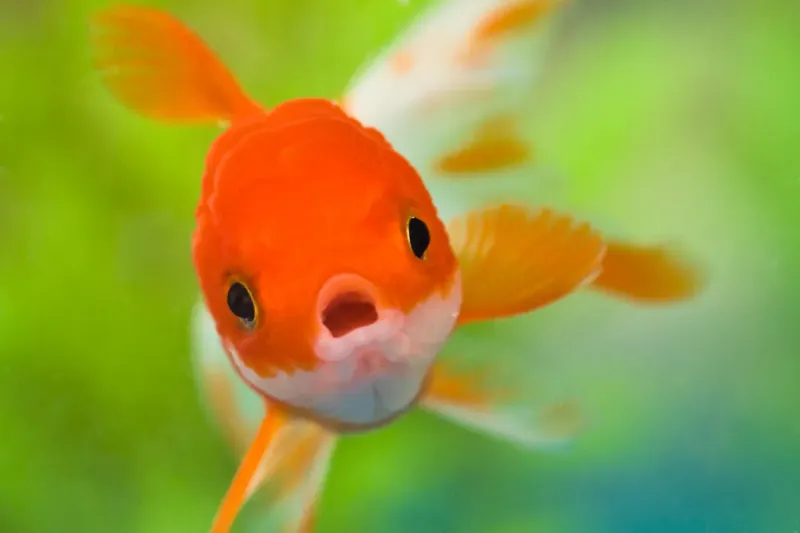
Goldfish are a staple of home aquariums, recognized for their shimmering orange scales. Originally from East Asia, they are now found worldwide in ornamental ponds and tanks.
These fish are not just admired for their beauty but also their calm demeanor. Goldfish are social creatures, often seen swimming in groups, adding a touch of elegance to their aquatic environment.
Interesting fact: Goldfish have a memory span much longer than three seconds, contrary to popular myth!
Scarlet Macaw
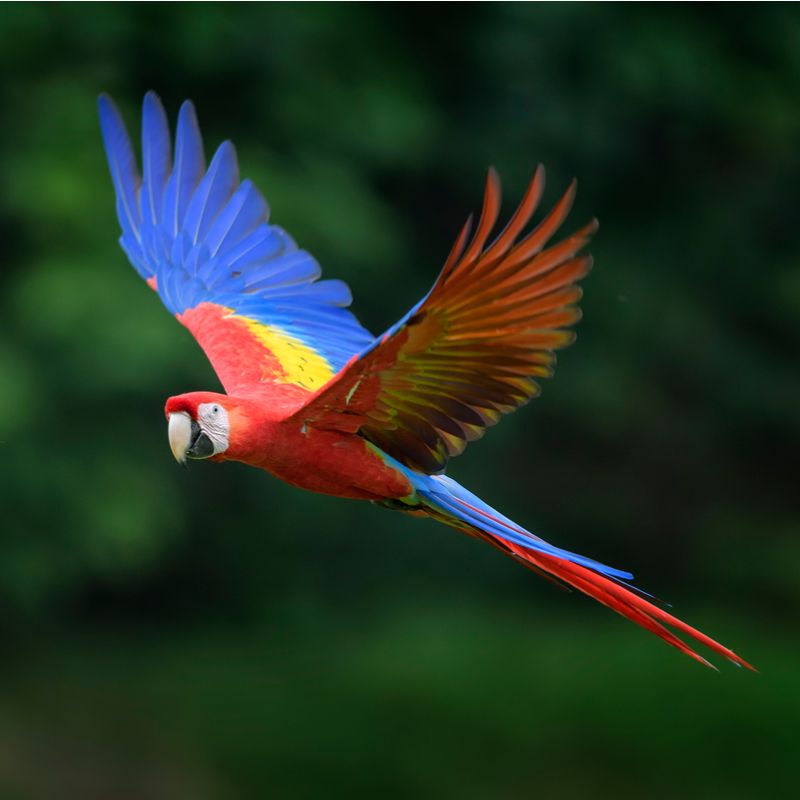
The Scarlet Macaw is a breathtaking spectacle of colors, with its striking red plumage accented by yellow and blue. Native to the humid evergreen forests of Central and South America, these birds are not only beautiful but also intelligent and social.
Macaws form strong bonds with their mates, often seen flying together in pairs or small flocks. Their loud calls can be heard echoing through the forests.
Did you know? Scarlet Macaws can live up to 75 years in captivity, making them lifelong companions!
Tiger
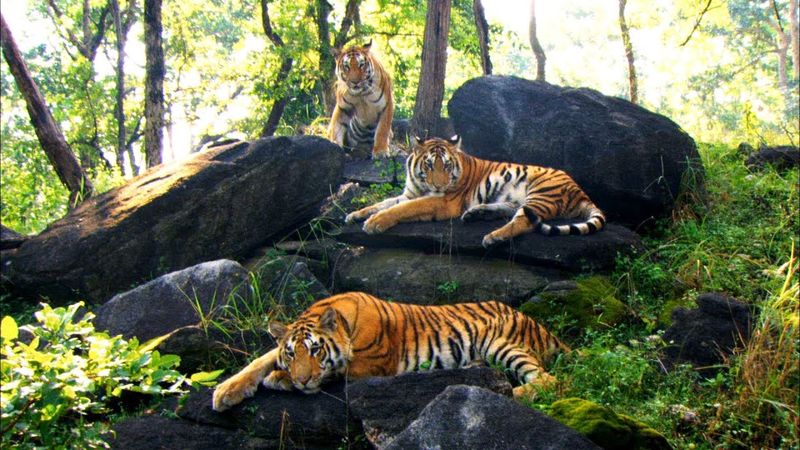
Tigers are iconic for their majestic appearance and powerful presence. Their vibrant orange coats, adorned with bold black stripes, make them one of the most recognizable animals in the world.
These solitary predators are found in diverse habitats across Asia, from dense jungles to grasslands. Tigers are apex predators, relying on stealth and strength to hunt large prey.
Fascinatingly, each tiger’s stripe pattern is unique, much like a human fingerprint!
Koi Fish
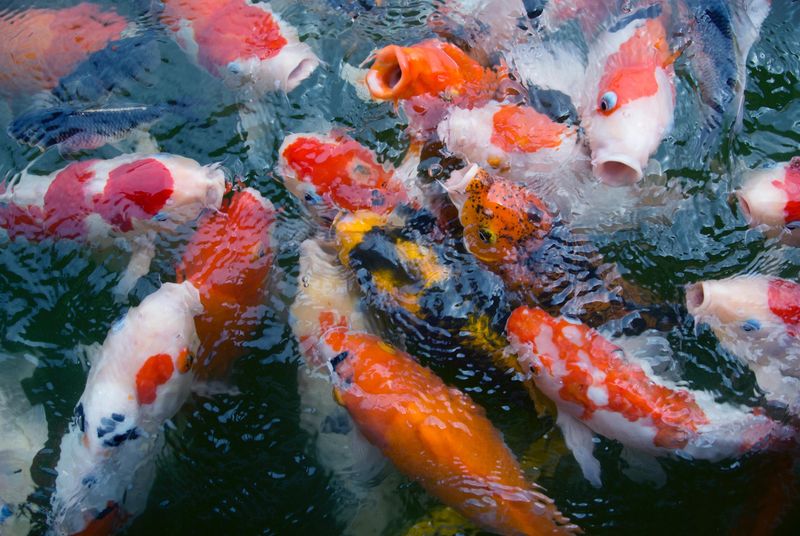
Koi fish, with their vibrant hues, are symbols of tranquility and beauty in Japanese culture. These ornamental fish are often seen gliding through garden ponds, their orange scales creating mesmerizing patterns.
Koi are known for their calm demeanor, adding a sense of peace to any water feature. They come in various colors, but the orange varieties are particularly striking.
Fun fact: Koi fish can live over 200 years, with one famous koi named Hanako living to 226 years old!
Orangutan
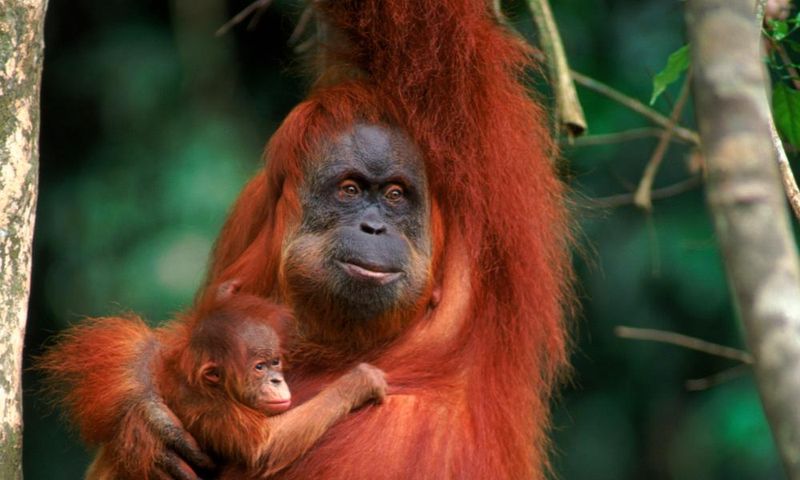
Orangutans, the gentle giants of the primate world, captivate with their intelligent eyes and flowing orange hair. Found in the rainforests of Borneo and Sumatra, these great apes are solitary creatures, spending most of their time in the treetops.
They have a diet rich in fruit, leaves, and bark, and use tools to aid in foraging. Orangutans are known for their impressive cognitive abilities and mimicry.
Conservation note: Orangutans are critically endangered due to habitat loss and poaching, making conservation efforts vital for their survival.
Fire Salamander

The fire salamander is a striking amphibian, known for its bold coloration of black with bright orange and yellow spots. Found in the forests of Europe, these nocturnal creatures prefer moist environments.
Fire salamanders are unique in that they give birth to live young, unlike most amphibians that lay eggs. They have a diet consisting mainly of insects and small invertebrates.
Intriguingly, their bright colors serve as a warning for their toxic skin secretions, deterring predators.
Monarch Butterfly
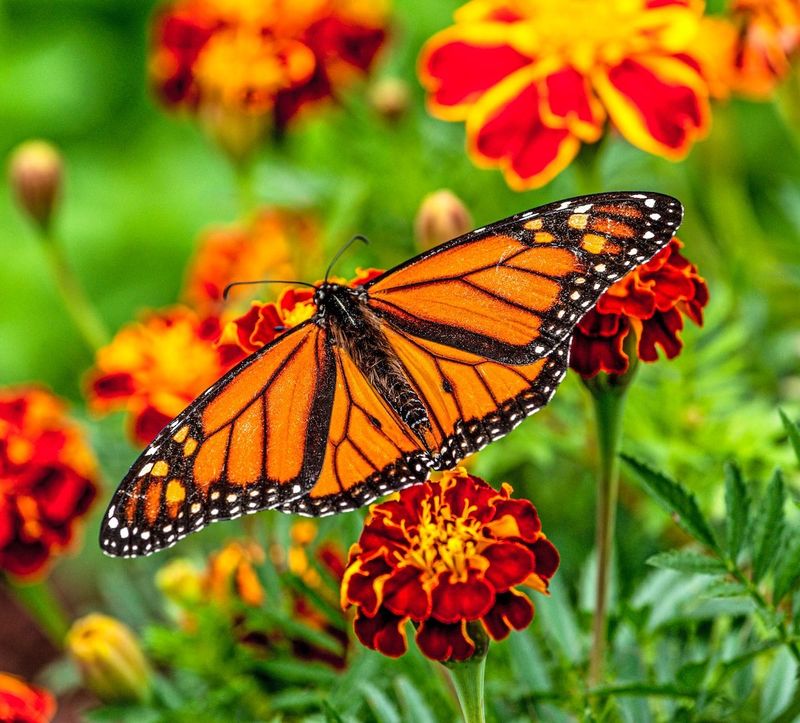
Monarch butterflies are renowned for their epic migrations and striking appearance. Their bright orange wings, laced with black and white spots, flutter gracefully through North American meadows and gardens.
These butterflies undertake a remarkable journey, traveling thousands of miles from Canada to Mexico each winter. Monarchs feed on milkweed, which provides them with toxins that make them distasteful to predators.
Did you know? Monarchs are the only butterflies known to make a two-way migration, much like birds!
Mandarin Duck
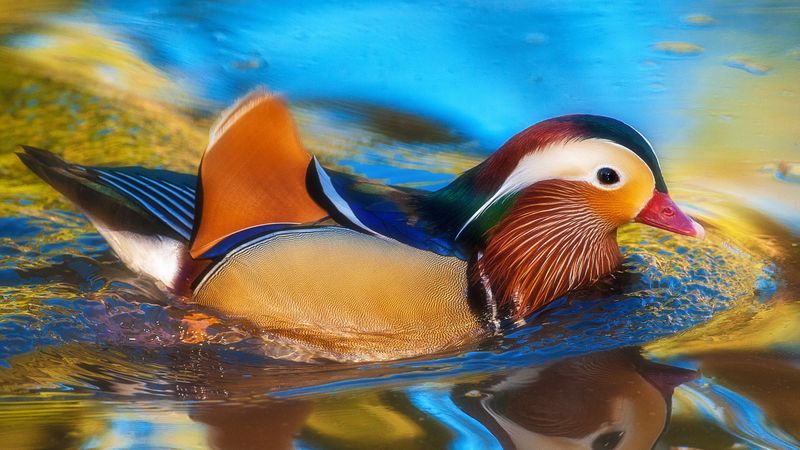
The mandarin duck is often considered the world’s most beautiful duck, with its dazzling array of colors. Males boast an extravagant plumage of orange, green, blue, and white, making them truly eye-catching.
Native to East Asia, these ducks are often seen in pairs, symbolizing love and fidelity in many cultures. They inhabit lakes, marshes, and rivers, feeding on fish, insects, and aquatic plants.
Fun tidbit: Mandarin ducks are monogamous and will often return to the same nesting site year after year.
Asian Golden Cat

The Asian golden cat is a mysterious and elusive feline, known for its beautiful golden coat. Native to the dense jungles of Southeast Asia, this solitary hunter is rarely seen, adding to its allure.
These cats are versatile predators, preying on small mammals, birds, and reptiles. Their coat color can range from golden, gray, to reddish-brown, with some individuals exhibiting spots or stripes.
Curious fact: Despite their name, not all Asian golden cats are golden; their coloration varies greatly!
Orange Sea Star

Orange sea stars, with their vibrant hue, add a splash of color to the ocean floor. These echinoderms are found in a variety of marine environments, from tidepools to deep-sea regions.
Their unique anatomy allows them to regenerate lost arms, a fascinating adaptation for survival. Sea stars are carnivorous, feeding on mollusks and other small sea creatures.
Intriguingly, sea stars move using hundreds of tube feet located on their underside, creating a mesmerizing sight as they glide along the sea bed.
European Robin
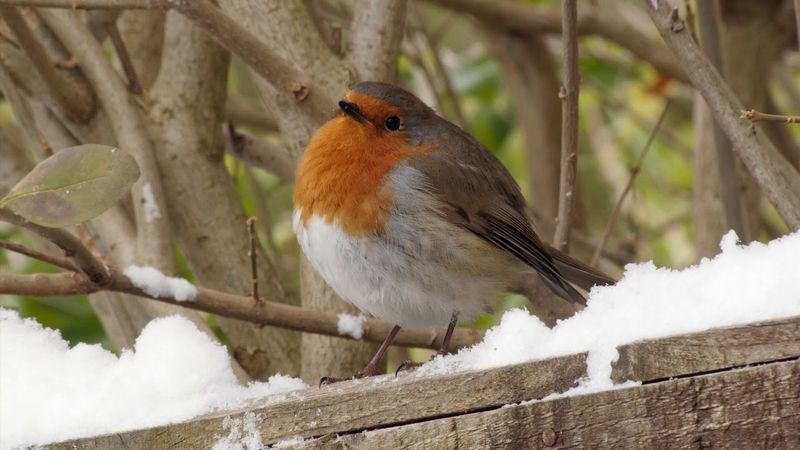
The European robin, with its warm orange breast, is a beloved symbol of winter and Christmas in many cultures. These small, plump birds are known for their melodious song, often heard in gardens across Europe.
Robins are territorial creatures, fiercely defending their patch of land, especially during the breeding season. They thrive in a variety of habitats, from woodlands to urban gardens.
Fun fact: In the UK, robins are affectionately known as “robin redbreasts,” despite their orange coloring!
Red Panda
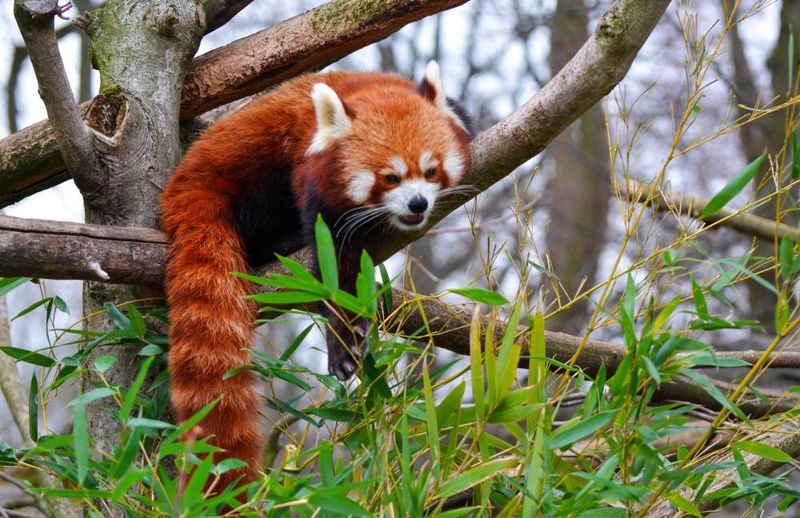
Red pandas, often overshadowed by their giant panda cousins, are charming creatures with a captivating appearance. Their russet coats and bushy tails make them look like living fireballs in the forest canopy.
Found in the mountainous regions of Nepal and China, red pandas primarily eat bamboo but also enjoy fruits and insects. They are solitary and spend most of their time in trees.
Conservation note: Red pandas are endangered due to habitat loss, emphasizing the need for preservation efforts.
Orange Tanager
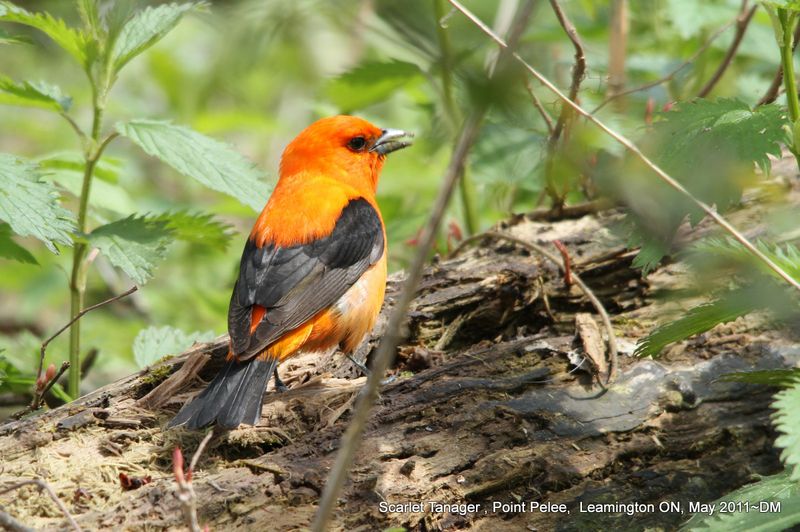
With its plumage ablaze, the Orange Tanager appears like a flying ember against the verdant backdrop of Central American forests. This bird’s striking orange feathers make it a standout amidst the green canopy, drawing birdwatchers from across the globe.
The Orange Tanager’s melodious song adds a harmonious touch to its fiery appearance, echoing through the jungle. Its diet consists mainly of fruits and insects, which it skillfully hunts among the trees.
Did you know? This vibrant bird plays a crucial role in the ecosystem by helping with seed dispersal, ensuring the continuation of its lush habitat.
Orange-bellied Parrot

The Orange-bellied Parrot, with its striking bright orange belly, is a rare gem among birds. Found in the coastal regions of southern Australia, these parrots exhibit a brilliant mix of green and orange, creating a fiery spectacle in flight.
Known for their gentle chirping, they thrive in eucalyptus woodlands, where they find both food and shelter. Unfortunately, their population is critically endangered, making sightings incredibly special.
Conservation efforts are in place to protect these vivid creatures, as their survival is essential for maintaining the biodiversity of their natural habitats.

